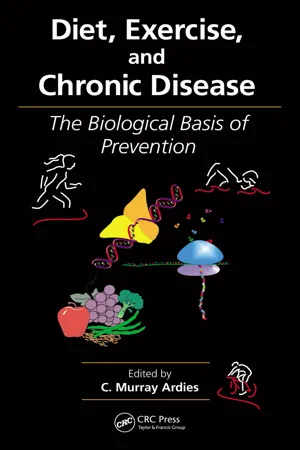Biological Sciences
Diabetes
Diabetes is a chronic condition characterized by high levels of sugar in the blood. It occurs when the body either does not produce enough insulin or cannot effectively use the insulin it produces. There are different types of diabetes, including type 1, type 2, and gestational diabetes, each with its own specific causes and risk factors.
Written by Perlego with AI-assistance
Related key terms
1 of 5
10 Key excerpts on "Diabetes"
- eBook - PDF
Care of People with Diabetes
A Manual of Nursing Practice
- Trisha Dunning(Author)
- 2008(Publication Date)
- Wiley-Blackwell(Publisher)
Chapter 1 Diagnosis and Classification of Diabetes 1.1 Key points l Diabetes represents a considerable economic and social burden for the person with Diabetes and the health system. l The classification of Diabetes was revised by the American Diabetes Association in 1997 and adopted by the World Health Organisation in 1998. It was adopted in Australia and by Diabetes UK in 1999. l Type 2 Diabetes is a progressive disease and complications are often present at diagnosis. 1.2 What is Diabetes mellitus? Diabetes mellitus is a metabolic disorder in which the body's capacity to utilise glucose, fat and protein is disturbed due to insulin deficiency or insulin resistance. Both states lead to an elevated blood glucose concentration and glycosuria. The body is unable to utilise glucose in the absence of insulin and draws on fats and proteins in an effort to supply fuel for energy. Carbohydrate is necessary for the complete metabolism of fats, however, and when carbohydrate metabolism is disordered fat metabolism is incomplete and intermediate products (ketone bodies) can accumulate in the blood leading to ketosis, especially in Type 1 Diabetes. The protein breakdown in this situation leads to weight loss and weakness and contributes to the development of hyperglycaemia and lethargy. There are different types of Diabetes which have different underlying causal mechan-isms and clinical presentation. In general, young people are insulin-deficient (Type 1 Diabetes), while older people may have sufficient insulin secretion and plasma insulin levels but demonstrate resistance to its action (Type 2 Diabetes). Type 2 Diabetes is the most common, accounting for 85% of diagnosed cases; Type 1 accounts for 15% of diagnosed cases. N.B. Type 2 Diabetes occurs in children and Type 1 Diabetes occurs in the elderly. 1.3 Classification of Diabetes The American Diabetes Association (ADA) announced a revised Diabetes classification system and diagnostic criteria in 1997. - Seth Kwabena Amponsah, Emmanuel Kwaku Ofori, Yashwant V. Pathak, Seth Kwabena Amponsah, Emmanuel Kwaku Ofori, Yashwant V. Pathak(Authors)
- 2023(Publication Date)
- CRC Press(Publisher)
14 Consideration of the Pathophysiology and Treatment of Type 1 and Type 2 Diabetes Mellitus and Other Diabetes Mellitus Subtypes
Paige DeBlieux, Monica Stevens, Richard Kang, and Charles PreussDOI: 10.1201/9781003384823-1414.1 Introduction
“Diabetes” is a somewhat non-specific term that refers to several conditions of metabolic dysregulation. Diabetes mellitus, Diabetes insipidus, gestational Diabetes, and maturity-onset Diabetes of the young are just a few categories that fall under this broader term of Diabetes, with each encompassing further subsets. However, if you have heard someone use the term “Diabetes” colloquially, they are most likely referring to Diabetes mellitus, a condition in which a person’s blood sugar concentrations are chronically elevated above normal physiologic levels. Diabetes mellitus classically falls under one of two categories: type 1 or type 2. In 2022, according to the Centers for Disease Control National Diabetes Statistics Report, 37.3 million adults in the United States, with or without a formal diagnosis, had Diabetes (1 ), that is, 11.3% of the adult population, “adult” being defined as those of 18 years of age or older. Far surpassing that number are those who are considered “pre-diabetic”, at 96 million, or 38% of the adult population. In the 65 and older age group, nearly 50% of adults have been diagnosed with pre-Diabetes. These statistics elucidate just how pertinent this metabolic condition is among our population, especially older adults, and the need for education and awareness.This disease is without doubt a life-altering diagnosis. At the very least, people are expected to change their lifestyle by avoiding processed sugars, to exercise regularly for weight management, and to undergo daily glucose checks. (2 ) More often, people are started on a medication regimen that can range from one pill (tablet or capsule) twice daily to complex routines involving multiple medications and close monitoring. These medications, as with all pharmacological therapies, have varying side effects that can include anything from gastrointestinal upset to lactic acidosis to serious hypoglycemia and death. (3 , 4- eBook - PDF
- Henning Andersen, Friedrich Arnold Gries, Norman E. Cameron, Phillip A. Low, Dan Ziegler(Authors)
- 2002(Publication Date)
- Thieme(Publisher)
1 1 2 3 4 5 6 7 8 9 10 11 12 13 14 15 16 17 18 19 20 21 22 23 24 25 26 27 28 29 30 31 32 33 34 35 36 37 38 39 40 41 42 43 44 45 46 47 48 49 50 51 52 53 54 55 56 57 58 59 1 Diabetes Mellitus: An Introduction F.A. Gries, J. Eckel, P. Rösen, and D. Ziegler The aim of this introduction is to provide a general un-derstanding of Diabetes mellitus and its impact on the diabetic individual. It will focus on aspects of epide-miology, pathobiochemistry, prevention, and therapy. Given the scope covered, selectivity and bias of topics and citations have been accepted as unavoidable. Definition The term “Diabetes mellitus” comprises a number of chronic diseases characterized by hyperglycemia due to absolute or relative insulin deficiency. Hyper-glycemia is only the most obvious biochemical marker of complex metabolic disorders that affect carbohy-drate, lipid, protein, and electrolyte metabolism and may impair numerous organs and functions of the or-ganism. Diagnosis The diagnosis of Diabetes mellitus is based on classical symptoms (weight loss, polyuria, thirst, muscular weakness and fatigue) and persistent hyperglycemia. Glucosuria and elevated glycosylated hemoglobin (HbA 1c ) levels should not be used for diagnosis. The criteria for diagnosis of hyperglycemia and the classi-fication of Diabetes mellitus are not uniformly accept-ed. Some physicians use the criteria of the United States National Diabetes Data Group of 1979 [1], which was endorsed by the World Health Organization Study Group on Diabetes Mellitus in 1985 [2], while others prefer the criteria of the Expert Committee on the Diagnosis and Classification of Diabetes Mellitus of the American Diabetes Association 1998 [3] (Table 1. 1 ). - eBook - PDF
Diet, Exercise, and Chronic Disease
The Biological Basis of Prevention
- C. Murray Ardies(Author)
- 2014(Publication Date)
- CRC Press(Publisher)
Types of Diabetes are defined by etiology. Simplistically, hyperglycemia is caused by a mismatch in glucose appearance, from gut or liver gluconeogenesis, and glucose dis- posal, due to insufficient insulin action or decrease in end-organ glucose metabolism. The current etiological classification of Diabetes mellitus by the American Diabetes Association (ADA) specifies 51 types of Diabetes mellitus in addition to “others.” 1 For simplicity, Diabetes can be divided into four main categories: “Type 1,” caused by auto- immune mechanisms that result in pancreatic β-cell destruction; “Type 2,” which has a metabolic origin that results in insulin resistance and defective insulin secretion; “Gestational,” which also has a metabolic origin resulting in impaired insulin function and release; and “Other” forms with a variety of possible causes including genetic, infectious, neoplastic, pharmaceutical, hormonal, and trauma also leading to impaired insulin release and function or defective glucose metabolism. By far, the etiologies of Diabetes most familiar to clinicians are autoimmune-mediated destruction of pan- creatic β cells or type 1 Diabetes (T1DM), which currently represents approximately 5%–10% of cases, and metabolically mediated resistance to insulin action and dys- function of glucose regulation or type 2 Diabetes mellitus (T2DM), which represents approximately 90%–95% of cases. Although gestational Diabetes mellitus (GDM) is metabolically mediated and similar to T2DM, its usual transient nature and differ- ences in definition and aggressiveness of treatment assign it a separate category. The recent explosion in the prevalence of Diabetes is associated with similar rise in obesity and associated T2DM. This rise coincides with increased availability of food and the readiness of industrialized nations to adopt a sedentary lifestyle. - eBook - PDF
Making Diabetes
The Politics of Diabetes Diagnostics in Uganda
- Arlena Siobhan Liggins(Author)
- 2020(Publication Date)
- transcript Verlag(Publisher)
It is the most acute complication of Diabetes mellitus, as a too low blood sugar may impair the brain and cardiac functions. If the glucose levels drop amply, the individual’s cognitive functions will be disturbed (Evans and Amiel 2002). This is why it is hypoglycemia, which patients often fear the most, as we will also see later in the empirical chapters. Before we proceed, let us recapitulate some few aspects. We will focus on two major types of Diabetes: Type 1 Diabetes and type 2 Diabetes. What both types have in common is a condition called hyperglycemia, which means elevated blood sugar levels. The problematic issue for an individual with Diabetes is that the body con-tains too much blood sugar in relation to the amount of insulin delivered by the pancreas. The blood sugar levels will either rise if our body cannot produce enough insulin to match up to the amount of sugar in the bloodstream, or if the pancreas fails to produce insulin. If this state of elevated blood sugar levels in our blood persists, we develop Diabetes. Summarized and put into one sentence: we develop Diabetes if our blood sugar levels are continuously elevated resulting from either too little insulin produced or a total failure to produce insulin (Kerner et al. 2001; see also Alberti and Zimmet 1998). Though the origination process of Diabetes in type 1 and type 2 Diabetes dif fers, the symptoms of type 1 and type 2 Diabetes are nearly the same. Nonetheless, it is the second type where the disease comes silently, mantled in insidious symptoms and often leaves an individual undiagnosed until severe complications have developed; and it is the second type that makes the vast majority of Diabetes cases worldwide, about 90-95% (ADA 2016: 16). This insidious onset of Diabetes, leaving a diagnosis until late in the progression of the disease, has brought along the sobriquet “the silent killer”. - eBook - ePub
- Jahangir Moini(Author)
- 2019(Publication Date)
- Elsevier(Publisher)
This may be triggered by environmental factors in people who are genetically susceptible. Destruction of the beta-cells continues over months or years, until their masses have decreased to a point in which insulin concentration can no longer control plasma glucose levels. Type 1 Diabetes usually develops in childhood or adolescence. Type 1 Diabetes is discussed in detail in Chapter 6, Type 1 Diabetes. Type 2 Diabetes Mellitus Type 2 Diabetes mellitus involves inadequate secretion of insulin. Early in the disease, insulin levels are often very high, and this situation may continue later in disease development. However, peripheral insulin resistance as well as increased production of glucose by the liver cause insulin levels to be inadequate to normalize levels of plasma glucose. Then, insulin production becomes reduced, and hyperglycemia worsens. Type 2 Diabetes usually develops in adults, becoming more common with aging. Plasma glucose levels reach higher levels following meals in older than in younger adults. This is especially true following high-carbohydrate loads. The levels require more time to return to normal, partly due to increased accumulation of visceral and abdominal fat, along with decreased muscle mass. Today, type 2 Diabetes is more common than ever among children, with childhood obesity becoming an epidemic. In children, 40%–50% of new-onset Diabetes is type 2. More than 90% of adults with Diabetes have this form. Clear genetic factors exist, influencing prevalence of type 2 Diabetes in Hispanics, American-Indians, and Asians as well as other ethnic groups, and in relatives of patients. Several genetic polymorphisms have been identified, but there has been no single causative gene identified. Type 2 Diabetes is discussed in detail in Chapter 7, Type 2 Diabetes - eBook - ePub
- Ian E. Brighthope(Author)
- 2012(Publication Date)
- Basic Health Publications, Inc.(Publisher)
PART 1 UNDERSTANDING DIABETESPassage contains an image CHAPTER 1 WHAT IS DIABETES ?
Man is a food-dependent creature. If you don’t feed him, he will die. If you feed him improperly, part of him will die.—EMANUEL CHERASKIN , M.D., D.M.D.D iabetes mellitus is a chronic illness that affects the way the body uses food for energy. It is characterized by high blood levels of a sugar called glucose, which is the main source of fuel for the body. In Diabetes, the body is not able to effectively use glucose to fuel its needs, leaving cells starved for energy.During digestion, food is broken down into components that can be absorbed and used by the body in all of its daily functions. Most of the food we eat is broken down into glucose, which is released into the bloodstream as food is digested, so that it can be used for energy. The corresponding rise in blood glucose levels after a meal stimulates a gland called the pancreas, located behind the stomach, to release insulin. Insulin is a hormone that helps move glucose from the bloodstream into muscle, fat, and liver cells. With the assistance of other factors, including the glucose tolerance factor (GTF), insulin opens up channels in the cell membrane that allow glucose molecules to enter the cell to produce energy.In people who have Diabetes, the pancreas either produces little or no insulin, or the body’s cells do not respond well to the insulin that is produced. As a result, glucose is unable to enter into the cells and instead builds up in the blood, where it is useless as a fuel source and dangerous to the body as well. Some of the glucose also spills over into the urine and passes out of the body during urination. - eBook - ePub
Netter's Essential Biochemistry E-Book
Netter's Essential Biochemistry E-Book
- Peter Ronner(Author)
- 2016(Publication Date)
- Elsevier(Publisher)
Continuous glucose monitors measure the concentration of glucose in the interstitial fluid continuously and can often provide helpful information about daily excursions of the concentration of glucose. This information can be used to improve control of blood glucose.5. Pathogenesis, Diagnosis, and Treatment of Type 2 Diabetes
Type 2 Diabetes is usually diagnosed after a screening procedure or when a patient has a typical complication of type 2 Diabetes, such as a stroke or myocardial infarction. Almost all type 2 diabetic patients take up an abnormally small amount of glucose in response to insulin, and all type 2 diabetic patients secrete an inadequate amount of insulin to maintain a normal concentration of glucose in the blood. A person's chance for developing type 2 Diabetes depends on genetic factors, body weight, and age. Available treatments for type 2 Diabetes can be well rationalized based on knowledge of glucose homeostasis. Treatments decrease the rate of influx of glucose into the blood, increase insulin secretion, increase the effect of insulin on metabolism, attenuate glucose production by liver and kidneys, or induce a significant loss of glucose into the urine.5.1 Pathogenesis
Type 2 Diabetes is largely a result of the interplay of a patient's genotype , diet , exercise , and age .More than 60 genetic loci are known to affect the risk of developing type 2 Diabetes, and many more loci remain to be discovered to account for the contribution of genetics to a person's risk for type 2 Diabetes. The genetic predisposition to type 2 Diabetes is somewhat smaller than the genetic predisposition to type 1 Diabetes. There is little overlap between genetic loci that predispose to type 1 and type 2 Diabetes.The locus that confers the highest risk for type 2 Diabetes is in the TCF7L2 - eBook - ePub
- Malcolm D. C. Donaldson, John W. Gregory, Guy Van-Vliet, Joseph I. Wolfsdorf(Authors)
- 2019(Publication Date)
- Wiley-Blackwell(Publisher)
1 Diabetes Mellitus- Definition
- Incidence
- Biochemistry
- Clinical presentation
- Investigations
- Initial management of newly diagnosed type 1 Diabetes
- Insulin therapy in type 1 Diabetes
- Dietary management
- Management of the child presenting with ketoacidosis
- The Diabetes clinic
- Monitoring and assessment of Diabetes control
- Exercise
- Diabetes in preschool‐aged children
- Diabetes in adolescence
- Hypoglycaemia in youth with Diabetes
- Recurrent DKA and its prevention
- Management of Diabetes during intercurrent illness (‘Sick Day Rules’)
- Management of Diabetes when travelling
- Management of Diabetes during surgery
- Long‐term complications of Diabetes
- Type 2 Diabetes in children and adolescents
- Miscellaneous practical matters
- Endocrine and other disorders associated with Diabetes
- Unusual causes of Diabetes in childhood
- Audit and benchmarking
- Future developments
- Controversial points
- Potential pitfalls
- Case histories
- Significant Guidelines/Consensus Statements
- References
- Useful Information for Patients and Parents
- Advice on transition from paediatric to adult care
Definition
Diabetes mellitus is a heterogeneous disorder characterized by abnormal metabolism of carbohydrate, fat and protein with persistent fasting or postprandial hyperglycaemia resulting from defects in insulin secretion or insulin action (Skyler et al. 2017 ). It is diagnosed in one of four ways (see Table 1.1 ) (American Diabetes 2018 ). A fasting plasma glucose (PG ) of 5.6–6.9 mmol/L (100–125 mg/dL) is considered preDiabetes, whereas <5.6 mmol/L (<100 mg/dL) is normal. The oral glucose tolerance test (OGTT ) is not recommended for routine clinical use. When classic symptoms are present, the diagnosis is usually straightforward and an OGTT is seldom needed; however, an OGTT may be indicated when mild hyperglycaemia is discovered without symptoms (e.g. in the sibling of a child with Diabetes or in children with disorders such as cystic fibrosis (CF - eBook - PDF
Type 2 Diabetes
From Pathophysiology to Modern Management
- Mira Siderova(Author)
- 2019(Publication Date)
- IntechOpen(Publisher)
In addition, the molecular impact of nutritional interventions in patients with T2D will also be addressed, as will the molecular keystones linking T2D and AD. Recently, there is accumulated evidence indicating that the two diseases may share common signaling pathways that may be relevant to the etiopathogenesis of each of them. Keywords: type 2 Diabetes mellitus, insulin resistance, hyperglycemia, oxidative stress, DNA repair, reactive oxygen species (ROS), mitochondrial dysfunction, Alzheimer’s disease 1. Introduction Diabetes mellitus is a metabolic disease that has a major impact on global public health, affecting more than 425 million people worldwide. The number of affected people tends to increase, mainly due to obesity, a risk factor closely related to type 2 Diabetes mellitus (T2D), the most common form of Diabetes. Hyperglycemia is the most striking feature of the disease, which is the increase of blood glucose levels above those presented by healthy individuals. This could be the main consequence of poor insulin secretion, lack of insulin sensitivity in target tissues or the combina-tion of both [1, 2]. The genetic predisposition may be one of the determinants that favor the susceptibility to T2D development. Several variants of genes and even epigenetic Type 2 Diabetes - From Pathophysiology to Modern Management 44 modifications in histones and DNA methylation may influence the heritability of T2D [3, 4]. Due to the complexity of the interaction of different factors involved in this disease, genome-wide association studies (GWAS) have been performed in an attempt to identify genetic variants related to the increased risk of T2D. In 2007, the first GWAS was performed in France in patients with T2D [5]; At present, at least 75 associated loci have been identified, including the TCF7L2 transcription factor, which is the most common gene found, in addition to PPARG, KCNJ11, FTO, CDKN2A/2B, CDKAL1, IGFBP2 among others [6].
Index pages curate the most relevant extracts from our library of academic textbooks. They’ve been created using an in-house natural language model (NLM), each adding context and meaning to key research topics.









